Introduction
Hey there, shoulder health enthusiasts! Welcome to our comprehensive guide on exercises for winging of scapula! We’re here to help you soar to new heights! In this article, we’ll dive into the fascinating world of winging of scapula and explore how exercises can be your secret weapon in overcoming this condition. Whether you’re a beginner looking to take your first flight or an advanced fitness guru seeking to refine your form, we’ve got you covered with a wide range of exercises catered to all levels.
SHOP FOR THE POSTURE CORRECTORS ON AMAZON
Now, before we get into the nitty-gritty of exercises, let’s quickly touch on what exactly winging of scapula is and why it’s important to address it head-on. Winging scapula refers to the awkward protrusion of the shoulder blade away from the back of the ribcage. Trust us, it’s not a pleasant experience. It can cause discomfort, pain, limited range of motion, and even affect your overall shoulder function. But fear not! We’re here to guide you through a series of exercises that will strengthen those scapular muscles and restore harmony to your shoulder joint.
Understanding Winging of Scapula
Winging of scapula may sound like a peculiar term, but it refers to a condition where the shoulder blade (scapula) protrudes or sticks out from the back. Let’s dive into this topic to gain a better understanding of what causes it, its symptoms, and debunk some common misconceptions.
What is Winging of Scapula?
Winging of scapula is a condition characterized by the abnormal prominence or sticking out of the shoulder blade from the back of the ribcage. It can occur due to various factors, including muscle weakness, nerve damage, trauma, poor posture, and repetitive overuse of muscles.
The most commonly affected muscle associated with scapular winging is the serratus anterior.
Causes of Winging Scapula
- Muscle Weakness: Weakness or paralysis of the serratus anterior muscle, responsible for stabilizing the shoulder blade, can lead to winging.
- Nerve Damage: Damage or injury to the long thoracic nerve, which innervates the serratus anterior, can result in scapular winging.
- Trauma: Falls, accidents, or direct impact to the shoulder or neck region can cause scapular winging.
- Poor Posture: Maintaining a slouched or hunched forward posture for extended periods can contribute to muscle imbalances and scapular winging.
- Repetitive Overuse: Certain sports or occupations that involve repetitive movements can strain the scapular muscles and contribute to winging.
Symptoms of Winging Scapula
- Visible Prominence: One of the primary signs of scapular winging is the noticeable protrusion or prominence of the shoulder blade.
- Pain and Discomfort: Winging of scapula can cause localized pain, discomfort, or aching in the affected shoulder or upper back region.
- Weakness and Limited Mobility: Individuals with scapular winging may experience weakness or difficulty in performing certain movements or exercises that involve the shoulder.
Importance of Diagnosing the Underlying Cause
Before embarking on an exercise routine, it’s crucial to identify the underlying cause of scapular winging. Consulting with a healthcare professional or physical therapist is highly recommended.
Diagnosing the specific cause helps in tailoring an effective treatment plan and selecting the most appropriate exercises to address the underlying issue.
Debunking Common Misconceptions or Myths
Myth: Scapular winging is purely a cosmetic issue and doesn’t affect functionality.
Reality: While scapular winging may be visually noticeable, it can lead to pain, weakness, and limited range of motion, significantly impacting daily activities.
Myth: Resting the affected shoulder is the best approach.
Reality: Rest alone may not address the underlying muscle weakness or imbalances. A structured exercise program is essential to strengthen the scapular muscles and promote proper shoulder function.
Myth: Only athletes or individuals involved in sports can develop scapular winging.
Reality: Scapular winging can occur in individuals of various backgrounds and lifestyles, including those with sedentary jobs. Factors like posture and muscle imbalances can contribute to its development.
SHOP FOR THE RESISTANCE BAND ON AMAZON
Understanding the causes, symptoms, and debunking misconceptions surrounding scapular winging is vital for taking the necessary steps towards alleviating this condition. By addressing the underlying factors and engaging in appropriate exercises, you can regain shoulder stability, reduce discomfort, and enhance your overall quality of life.
Benefits of Exercise for Winging Scapula
Regular exercise targeting the scapular muscles can work wonders for improving winging scapula and enhancing overall shoulder health. Let’s explore the fantastic benefits that these targeted exercises can bring to the table:
- Stronger Scapular Muscles:
- Strengthening the scapular muscles, especially the serratus anterior, can improve their ability to stabilize and support the shoulder blade.
- Enhanced muscle strength helps prevent excessive winging and promotes better alignment of the scapula.
- Improved Shoulder Stability:
- By strengthening the muscles responsible for scapular movement, exercises for winging scapula enhance shoulder stability.
- Greater stability reduces the risk of injury and improves performance during daily activities, sports, or workouts.
- Reduced Pain and Discomfort:
- Targeted exercises can alleviate pain associated with winging scapula.
- Strengthening the scapular muscles helps distribute the load more evenly, reducing strain on other muscles and joints.
- Increased Range of Motion:
- As the scapular muscles gain strength and flexibility, your shoulder’s range of motion can improve significantly.
- This increased range of motion allows for smoother and more fluid movement, enhancing your overall mobility.
- Improved Posture:
- Exercises for winging scapula can help correct poor posture caused by muscle imbalances.
- Strengthening the scapular muscles encourages proper alignment of the shoulder blades, leading to an improved posture.
- Enhanced Upper Body Functionality:
- Strong scapular muscles positively impact upper body movements and functional activities.
- Whether it’s reaching overhead, lifting objects, or performing sports-specific motions, improved scapular muscle strength enhances performance and reduces the risk of compensatory injuries.
- Better Shoulder Joint Health:
- By strengthening the scapular muscles, you provide better support and stability to the shoulder joint.
- This can help reduce the risk of shoulder impingement, rotator cuff injuries, and other shoulder-related issues.
- Boosted Confidence and Well-Being:
- Overcoming winging scapula through targeted exercises can boost your self-confidence and overall well-being.
- The sense of accomplishment and improved physical capabilities can positively impact your daily life and activities.
SHOP FOR THE FOAM ROLLER ON AMAZON
Remember, consistency is key when reaping the benefits of exercise for winging scapula. By incorporating these exercises into your routine and gradually progressing, you can experience significant improvements in shoulder stability, reduced pain, increased range of motion, and enhanced posture. So, let’s embark on this journey towards stronger and healthier shoulders together!
Effective Exercises for Winging Scapula
Now that we understand the importance of addressing winging of scapula, it’s time to dive into a comprehensive list of exercises specifically designed to tackle this condition. We have categorized the exercises into beginner, intermediate, and advanced levels, ensuring that individuals of all fitness backgrounds can find suitable options. Remember to listen to your body, start at an appropriate level, and gradually progress as you build strength and confidence. Let’s get started!
Beginner Level
1. Scapular Wall Slides
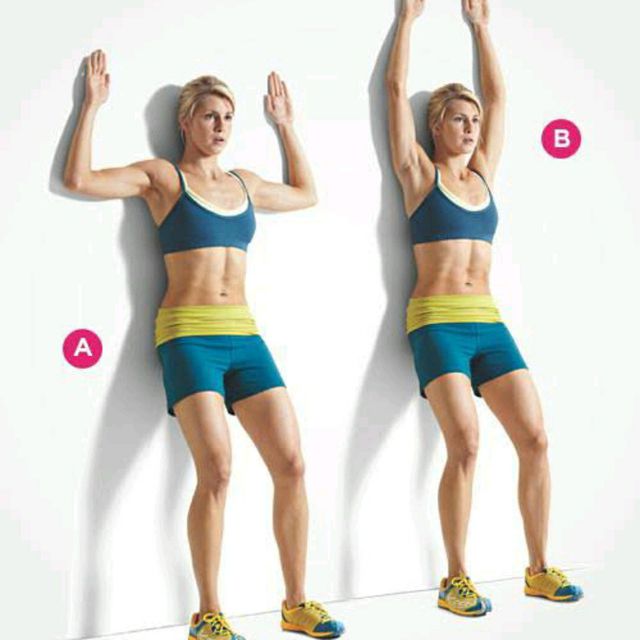
- Stand with your back against a wall, feet shoulder-width apart.
- Place your elbows and forearms against the wall, forming a 90-degree angle.
- Slide your forearms up and down the wall, keeping your shoulder blades engaged.
- Focus on maintaining proper alignment and feeling the muscles working.
- Perform 10-12 repetitions for 2-3 sets.
2. Prone T’s
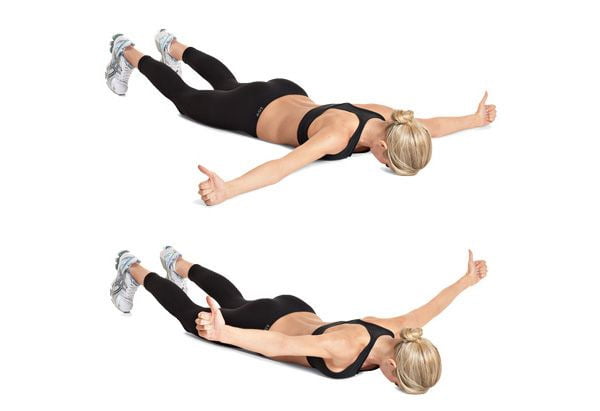
- Lie face down on a mat with your arms outstretched to form a “T” shape.
- Squeeze your shoulder blades together while lifting your arms off the ground.
- Keep your neck relaxed and gaze towards the floor.
- Lower your arms back down and repeat for 10-12 repetitions for 2-3 sets.
Intermediate Level
1. Plank with Alternating Shoulder Taps
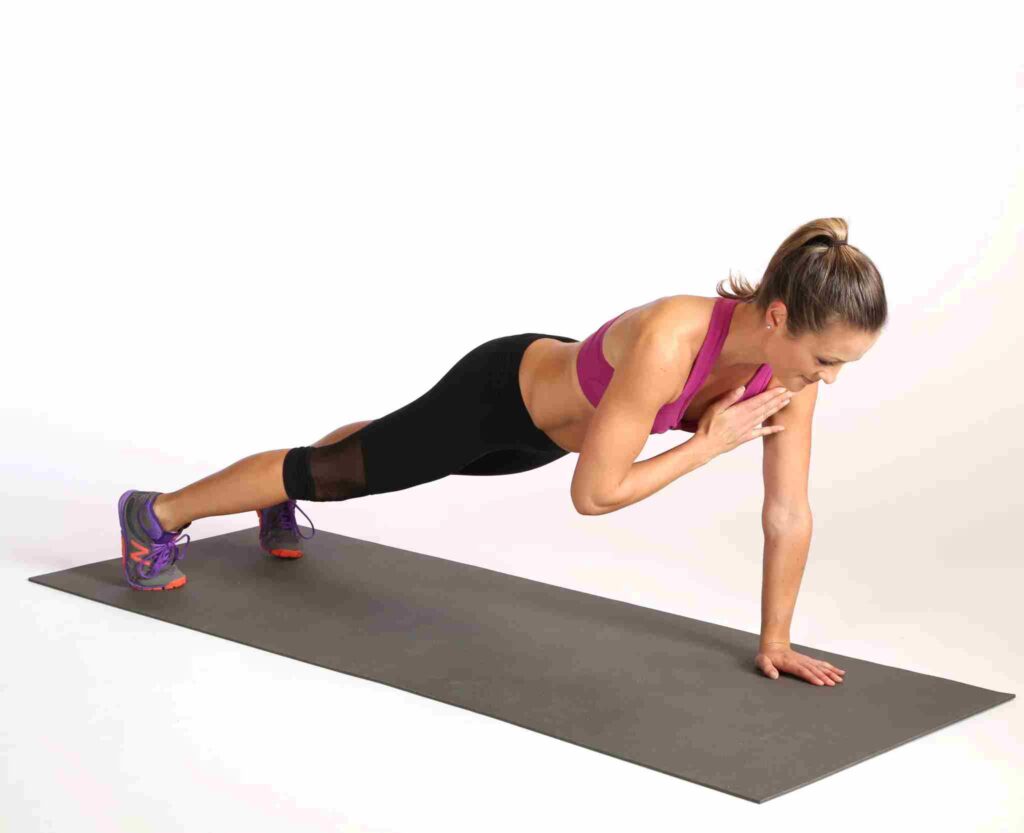
- Start in a high plank position, with your hands directly beneath your shoulders.
- Engage your core and lift one hand to touch the opposite shoulder.
- Return the hand to the starting position and repeat with the other hand.
- Focus on maintaining stability through your scapulae and avoiding excessive rotation.
- Perform 8-10 taps on each side for 2-3 sets.
2. Resistance Band Rows
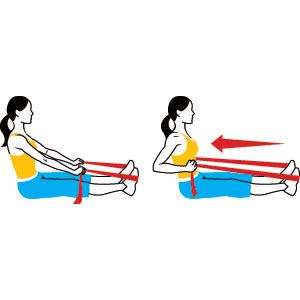
- Secure a resistance band to a sturdy anchor point at waist height.
- Hold the band with both hands, arms extended in front of you.
- Pull the band toward your body, retracting your shoulder blades.
- Keep your elbows close to your sides and squeeze your back muscles.
- Perform 10-12 repetitions for 2-3 sets.
Advanced Level
1. Push-Up Plus

- Assume a standard push-up position with your hands slightly wider than shoulder-width apart.
- Lower your body towards the floor, maintaining a straight line from head to toe.
- As you push back up, protract your shoulder blades by pushing your upper back away from the ground.
- Focus on controlled movement and fully engaging the scapular muscles.
- Perform 8-10 repetitions for 2-3 sets.
2. Single-Arm Dumbbell Row
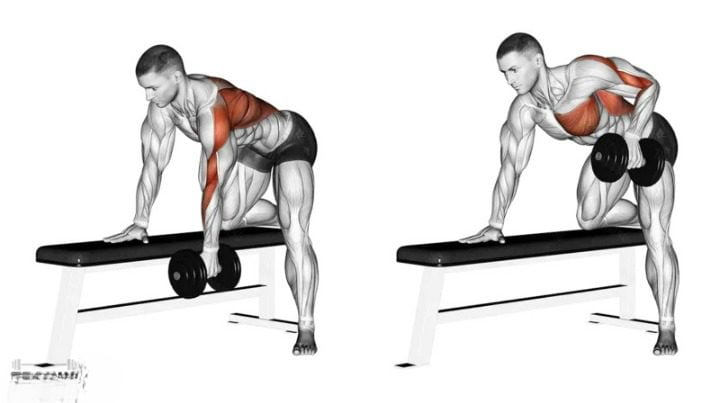
- Place your left hand and left knee on a bench, keeping your back flat.
- Hold a dumbbell in your right hand, arm fully extended towards the ground.
- Pull the dumbbell towards your chest, retracting your shoulder blade.
- Lower the dumbbell in a controlled manner and repeat on the other side.
- Perform 8-10 repetitions on each side for 2-3 sets.
Remember, these exercises are just a starting point, and it’s important to find variations or modifications that suit your fitness level and comfort. If an exercise feels too challenging, try a regression or seek guidance from a fitness professional. Conversely, if you’re looking for more challenge, explore progressions or add resistance to the exercises.
By consistently incorporating these exercises into your fitness routine, you’ll gradually strengthen your scapular muscles, improve shoulder stability, and reduce the effects of winging scapula. Stay motivated, stay consistent, and remember to enjoy the process of enhancing your shoulder health!
Stretching and Mobility Exercises: Unlocking Your Wings
Stretching and mobility exercises play a crucial role in alleviating winging of scapula and promoting overall shoulder health. These exercises not only help increase flexibility but also target the specific muscles involved in scapular winging. Incorporating a variety of stretches into your routine can enhance your range of motion, relieve muscle tension, and improve posture. So, let’s dive into some stretches that will help spread your wings and soar!
SHOP FOR THE MASSAGE BALL ON AMAZON
Before we begin, remember to always warm up your body before engaging in any stretching or exercise routine. A few minutes of light cardio, such as brisk walking or jogging in place, will get your blood flowing and prepare your muscles for the upcoming stretches. And don’t forget to cool down with gentle stretches and deep breathing at the end to relax your body and prevent muscle soreness. Now, let’s explore some effective stretching exercises:
1. Doorway Chest Stretch
- Find a doorway and stand facing it.
- Place your hands on either side of the doorframe, slightly above shoulder height.
- Take a step forward with one foot, allowing your body to lean forward gently.
- Feel the stretch in your chest and shoulders.
- Hold the stretch for 20-30 seconds, taking slow and deep breaths.
- Repeat the stretch 2-3 times.
Benefits: The doorway chest stretch targets the pectoral muscles and helps counteract the forward rounding of the shoulders often associated with winging of scapula. It promotes better posture and relieves tension in the chest area.
Shoulder Circles
- Stand with your feet shoulder-width apart and relax your arms by your sides.
- Gently lift your shoulders up towards your ears, then roll them backward in a circular motion.
- Continue the circular motion for 10-15 seconds.
- Reverse the direction and roll your shoulders forward for another 10-15 seconds.
- Repeat the exercise for a total of 2-3 sets.
Benefits: Shoulder circles help improve mobility and circulation in the shoulder joints, reducing stiffness and promoting a wider range of motion. They also engage the scapular muscles, aiding in the prevention of scapular winging.
Scapular Retraction
- Sit or stand with your back straight.
- Relax your arms by your sides.
- Squeeze your shoulder blades together, as if you’re trying to hold a pencil between them.
- Hold the squeeze for 5-10 seconds, then release.
- Repeat the movement for 10-12 repetitions.
Benefits: Scapular retraction exercises strengthen the rhomboids and middle trapezius muscles, which are essential for stabilizing the scapulae. By improving scapular control, these exercises contribute to reducing winging and enhancing shoulder stability.
Standing Arm Wall Stretch
- Stand facing a wall and extend your arms forward, resting your palms on the wall at shoulder height.
- Slowly walk your fingers up the wall while maintaining contact with your palms.
- Continue walking your fingers up until you feel a stretch in your shoulders and chest.
- Hold the stretch for 20-30 seconds, focusing on deep breathing.
- Repeat the stretch 2-3 times.
Benefits: The standing arm wall stretch targets the chest, anterior shoulder muscles, and the muscles responsible for protraction of the scapula. By stretching these muscles, it helps counteract the forward posture often associated with winging of scapula and improves overall shoulder mobility.
Remember, stretching and mobility exercises should be performed with proper form and technique. It’s important to listen to your body and avoid any movements that cause pain or discomfort. If you experience any persistent pain or have a history of shoulder injuries, consult with a healthcare professional or physical therapist for personalized guidance.
SHOP FOR THE EXERCISE MAT ON AMAZON
Incorporating these stretches into your daily routine can gradually improve your scapular mobility, reduce muscle imbalances, and alleviate winging of scapula. Remember, consistency is key! So, spread your wings, embrace these stretches, and take flight towards healthier shoulders!
Frequently Asked Questions (FAQs)
Q1: Can stretching and mobility exercises alone fix winging of scapula?
Ans: While stretching and mobility exercises are important components of managing winging of scapula, it’s crucial to address the underlying causes. Strengthening exercises and addressing muscle imbalances are also essential. Consult with a healthcare professional or physical therapist for a comprehensive treatment plan.
Q2: How often should I perform these exercises?
Ans: Consistency is key! Aim to perform these exercises at least 2-3 times per week. Listen to your body and adjust the frequency based on your comfort level and any recommendations from your healthcare provider.
Q3: Are these exercises suitable for all fitness levels?
Ans: The exercises presented in this article are designed to accommodate a range of fitness levels. However, it’s essential to start at an appropriate level for your abilities and gradually progress. If you’re unsure, consult with a healthcare professional or physical therapist to ensure you’re performing exercises that are suitable for your specific needs.
Q4: Can I do these exercises if I have a shoulder injury?
Ans: If you have a shoulder injury or any underlying medical condition, it’s crucial to consult with a healthcare professional or physical therapist before attempting these exercises. They can provide you with guidance tailored to your specific condition and ensure you’re performing exercises that won’t exacerbate your injury.
Q5: How long will it take to see results?
Ans: The timeline for seeing improvements varies from person to person. Factors such as the severity of the winging, consistency of exercise, and individual differences can impact the speed of progress. With dedication and regular practice, you can expect to notice improvements in your shoulder stability and reduced winging over time.
Q6: Can I combine these exercises with other workouts?
Ans: Absolutely! These exercises can be incorporated into your existing fitness routine. However, ensure that you maintain proper form and technique, and listen to your body’s limits. If you experience pain or discomfort, modify or discontinue exercises as needed and consult with a professional if necessary.
Conclusion
Congratulations on completing this journey to discover exercises for winging of scapula! By incorporating strengthening exercises, stretching, and mobility exercises into your fitness routine, you’re taking important steps towards improving your shoulder health and reducing winging.
Remember, addressing winging of scapula requires a holistic approach. It’s essential to not only focus on specific exercises but also address the underlying causes, such as muscle imbalances and postural issues. If you have any concerns or a history of shoulder injuries, consult with a healthcare professional or physical therapist to ensure you’re on the right track.
Consistency and patience are key in this process. It may take time to see significant improvements, but with dedication and regular practice, you’ll gradually notice increased shoulder stability, improved posture, and reduced winging. Listen to your body, respect your limits, and progress at a pace that suits your individual needs.

Good day, and welcome to Fitthour. My name is Shubham Vijay, and I am a certified personal trainer and nutrition coach with 6 years of experience in the fitness industry. At Fitthour, we specialize in types of training, such as strength training, cardio, or HIIT, and our mission is to help clients achieve their fitness goals and improve their overall health.




